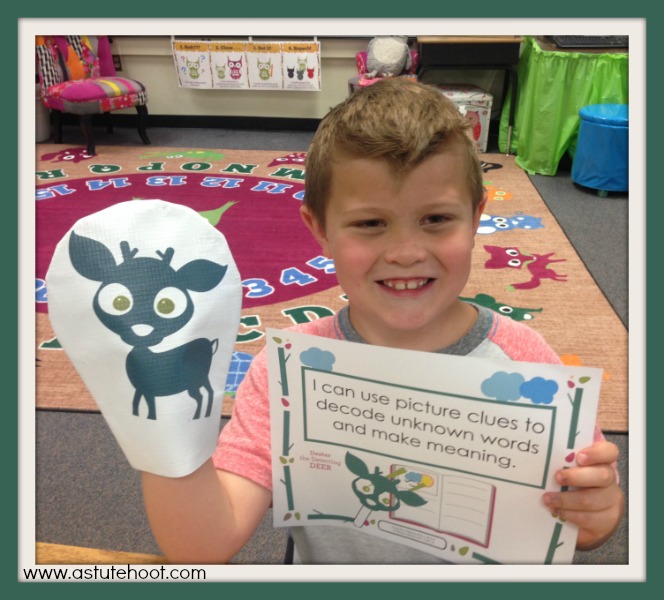“My name is Dexter the Detecting Deer.
Now let me tell you why I’m here.
I’ll help you look for picture clues,
So you don’t get the reading blues.
Look at the pictures to figure out
What the words are all about!”
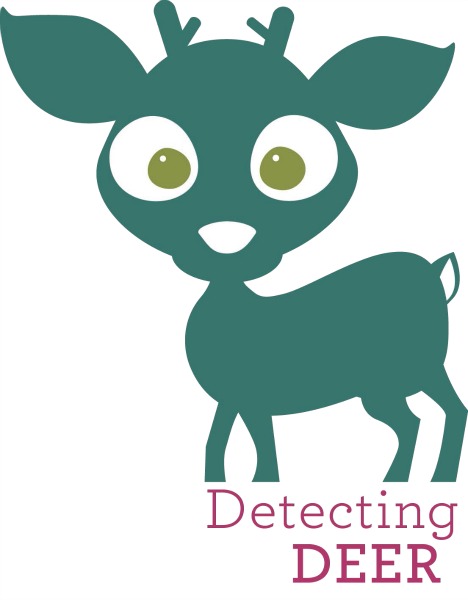
Dexter the Detecting Deer is one our decoding strategy animals in Hazel’s Reading Roost. Dexter helps students to practice critical early decoding skills. Read more about Dexter’s strategy below…
WHAT is detecting? Detecting is using picture clues from text to help students read unknown words and make meaning.
WHY is detecting important? Detecting, or using picture clues, is a key strategy for beginning readers. Pictorial clues can serve as a bridge to decoding strategies such as sounding out and blending and also compensate for weak decoding skills in struggling readers. Pictures can also increase comprehension by providing elaboration for a text explanation and improve recollection and retention. Teaching students to use the detecting strategy will help support other reading strategies as they learn how to read fluently and accurately.
HOW do I teach detecting? Explain that Dexter helps readers use picture clues from the text to read unknown words. While modeling using Dexter’s strategy, show students how pictures can be used alongside other clues to figure out unknown words such as initial sounds, blending, chunking and context clues.
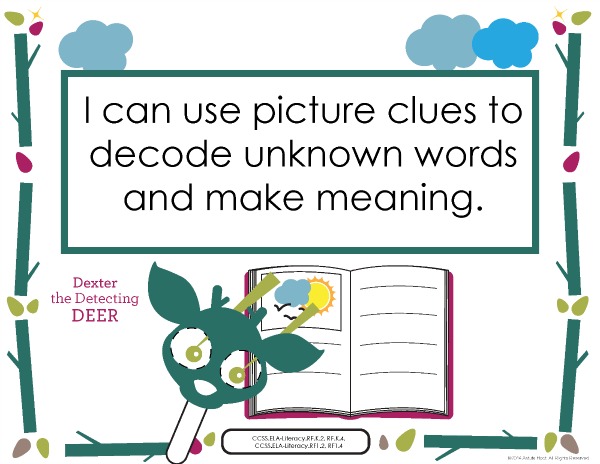
WHEN should I use detecting? Explicit reading strategy instruction should be included in a balanced literacy program. Dexter the Detecting Deer can be incorporated into various components of literacy lessons. Here are some specific examples of when to use Dexter:
- Detecting Practice: Divide students into pairs or work in a small reading group and distribute Picture Clue Windows and Dexter’s Picture Clue Practice Pages to each pair or group, keeping one to use. Read Dexter Detecting Deer Poem to introduce the strategy of using picture clues from the story to help students read unknown words and make meaning. Model using the Picture Clue Window to locate pictures that could help students read the blocked out words on the Picture Clue Practice Pages. Using a think-aloud, demonstrate how picture clues are used alongside other reading strategies to confirm or deny guesses at unknown words. Discuss how the pictures can give several ideas about what a word can be and initial sounds help you determine which word matches the letters.
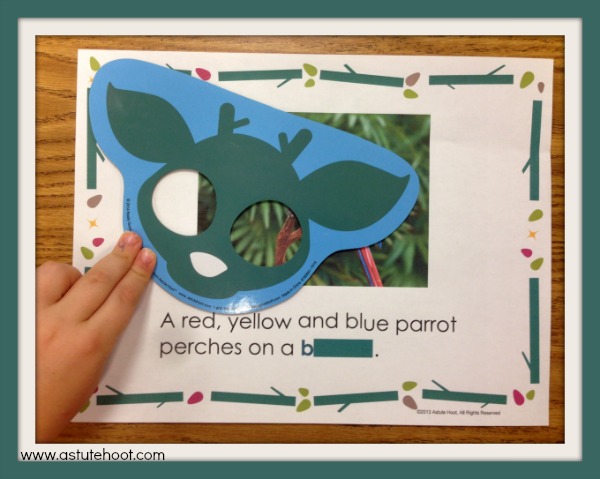
- Guided Reading: Introduce or review the strategy by reading the Dexter Detecting Deer Poem. Read aloud your selected guided reading text and model using the Picture Clue Window to read unknown words in context and/or determine meaning. Distribute text and Picture Clue Windows to each student. Call on individual students to use the Picture Clue Window with additional words. Activate engagement using a turn and talk to allow students to discuss how they use Dexter and compare their selected picture clues.
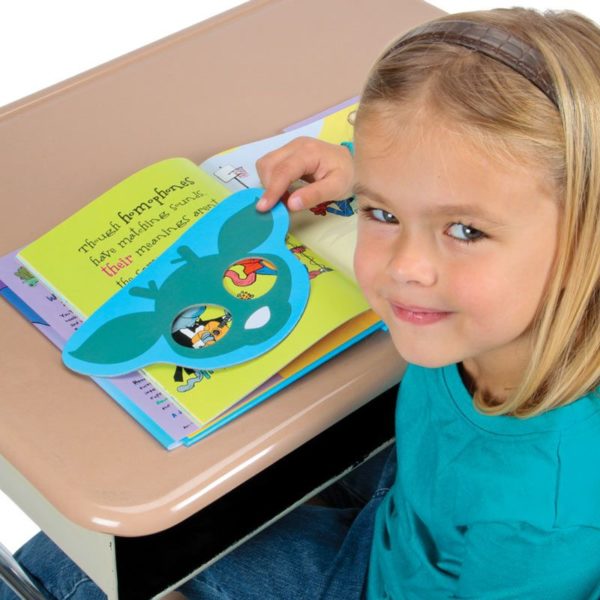
As an extension, have students use the Picture Clue Windows to identify key story elements in the pictures to make connections between text and illustrations. In addition, Picture Clue Windows can be used as an introduction to citing evidence when answering text-dependent questions. Students can use the Picture Clue Windows to show the illustrations that help them answer the questions. Encourage students to use Dexter Detecting Deer’s strategy when they are reading independently as well.
- Detecting Deer Reading Center: Create a portable reading center: Place a Picture Clue Window, a book with engaging pictures with key words covered up with small Post-Its, and a pencil in a large manila envelope with a copy of the Dexter Detecting Deer Poem glued onto the front. Instruct students that during center time they are to take an envelope to their desks and use the Picture Clue Window to practice using picture clues to read unknown words. Create several portable Detecting Deer reading centers using a variety of illustrated, leveled texts.
- Independent Practice: Have the Picture Clue Windows available for student use during independent reading time. This promotes transfer of reading strategies and self-correction techniques.
Helpful hint:
- Create a class set of Dexter Detecting Deer’s Picture Clue Windows. Print Picture Clue Windows onto cardstock and laminate. Distribute to class and model how to use during reading. These Picture Clue Windows can keep students actively engaged during choral reading, independent reading and small group. Sturdy, pre-made Picture Clue Windows are available from Really Good Stuff here.
Dexter’s unit is perfect for general education, special education, RTI and reading intervention. Download the complete unit here.


